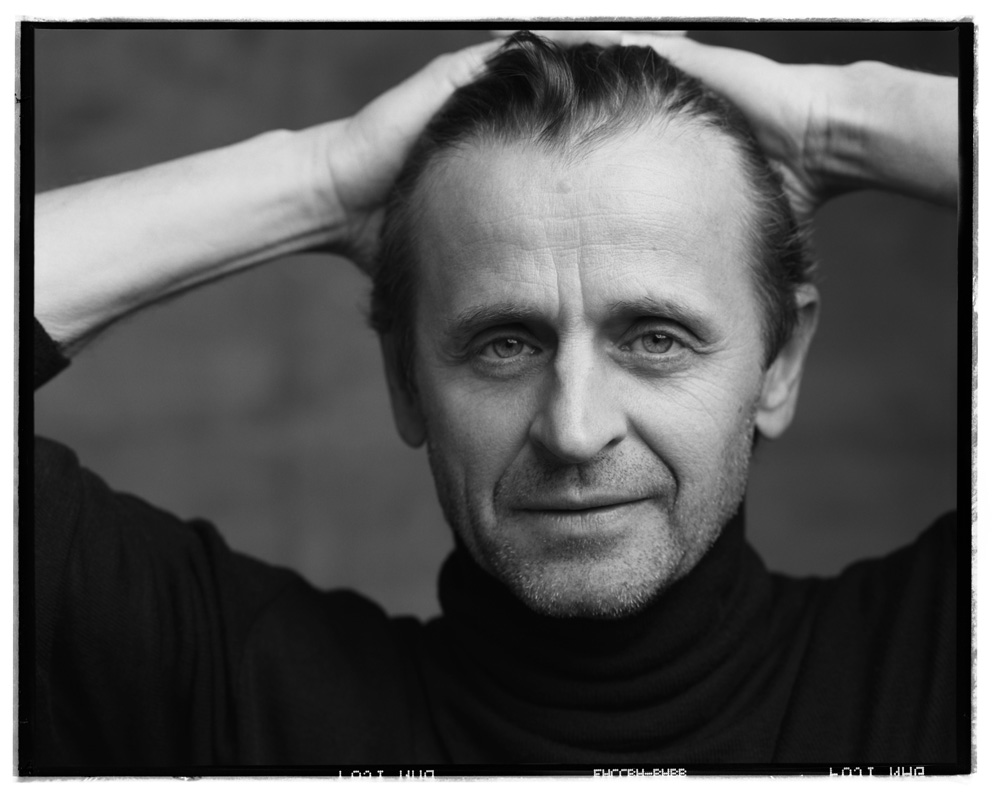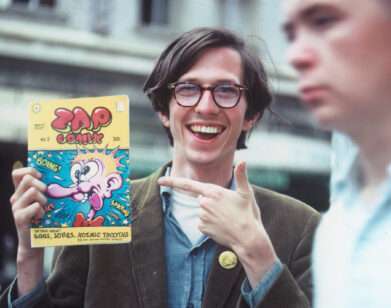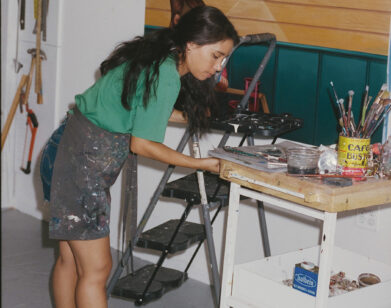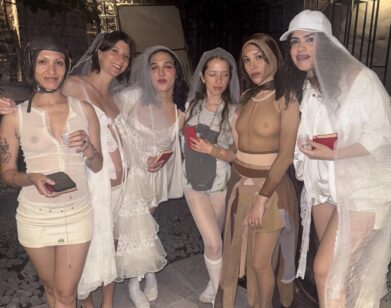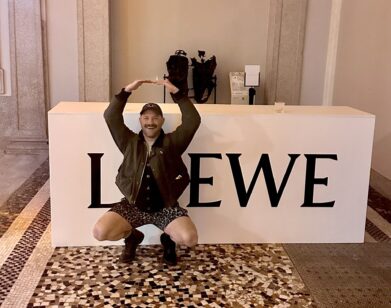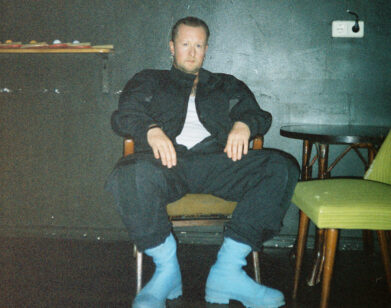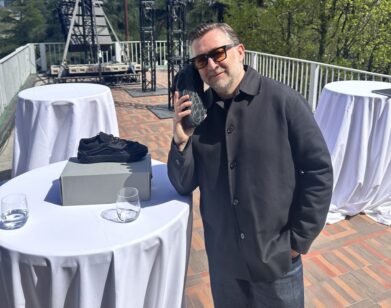Mikhail Baryshnikov Shares His Walls
Mikhail Baryshnikov is widely considered among the greatest male dancers in ballet history. His explosive power and athleticism, and the grace and purity of his classical technique, single-handedly redefined the role of the male principal dancer. Many of his performances were filmed, the most enduring being ABT’s 1977 production of The Nutcracker, with Gelsey Kirkland, and the feature film, The Turning Point, for which Baryshnikov earned Golden Globe and Oscar nominations. Beginning his career with the Kirov Ballet in Russia, Baryshnikov was a principal dancer with the New York City Ballet and American Ballet Theatre in the mid-’70s and ABT’s artistic director from 1980-90. The world’s premiere choreographers, from George Balanchine and Jerome Robbins to Martha Graham, Merce Cunningham, Alvin Ailey, Twylva Tharp, Trisha Brown, and Mark Morris, created works for Baryshnikov. In 1990, Baryshnikov co-founded the modern dance group White Oak Dance Project with Mark Morris, and he directed it until 2002.
Now 64, he is busier than ever: in addition to choreographing and dancing, he acts on stage (Beckett, Chekhov) and television (he played a visual installation artist in the final nine episodes of Sex and the City in 2004); and in 2005, he founded the Baryshnikov Arts Center (BAC), a multi-disciplinary arts organization in Hell’s Kitchen which provides rehearsal/performance space and support to dancers, choreographers, musicians, actors, filmmakers, and visual artists from all over the world. BAC, which is rapidly becoming a premiere New York cultural institution in the mode of Brooklyn Academy of Music, consumes much of Baryshnikov’s time these days, but he also exhibited his own photography at ABA Gallery in October of this year.
Currently, Baryshnikov has loaned an unprecedented 106 works of his private art collection to ABA Gallery for “The Art I’ve Lived With: Works from the Collection of Mikhail Baryshnikov” exhibition. The works represent a range of media (drawings, paintings), periods (19th-century to contemporary) and themes (many are dance and theater-related, including costume and set designs; others are abstract). Baryshnikov purchased some works as he toured the globe; others were gifts from famous friends. Perhaps our favorites are the priceless Jean Cocteau drawings, including a sketch of the Ballets Russes impresario Serge Diaghilev and the legendary dancer Vaslav Nijinsky.
We spoke with Baryshnikov recently about the current ABA exhibition, BAC and his remarkable life:
LORRAINE CWELICH: Are the walls of your home stripped bare?
MIKHAIL BARYSHNIKOV: [laughs] Well, it’s a little lighter now.
CWELICH: Why did you decide to present this exhibition?
BARYSHNIKOV: A few years ago, this wonderful lady, an elderly lady with a young heart, whom I admired for many years, the director of the Pushkin Museum in Moscow—I knew her socially and showed her the collection. She is one of the most knowledgeable people in this field. She really pushed me seriously to do this exhibit as a tribute to the artists who were involved. It’s a very eclectic collection. I had a few hundred pieces in New York and in my summer house in Europe. I was thinking about it for a few years and then the owner of the [ABA] gallery, a friend of mine, Anatol Bekkerman, saw what I had accumulated through the years and said, “If you want to do it, my gallery is at your disposal.” It was a very generous proposal.
CWELICH: Can you tell me a bit about the Merce Cunningham piece?
BARYSHNIKOV: In the last years of his life, he was drawing fantastical animals and birds for a few hours every morning before working on his dance pieces. I was very touched that, after he did a piece that we danced together, Occasion Piece [in 1999], he gave me this present, as a cherished memory of our work together. It was fantastic. Then Trisha Brown, when we worked together, gave me a drawing that she made, standing on a piece of paper and painting her toes. Jerome Robbins gave me a beautiful drawing after a premiere. I gave away a lot of works for benefits and then people would also give me back. It was a fluid kind of thing; I was never like, “collect, collect,” like people who go to auctions. I never spent a serious amount of time because I don’t have any time!
CWELICH: Did you collect or know Andy Warhol?
BARYSHNIKOV: I knew him very well. I admired his paintings and his work at the Factory and knew some people involved there. I never sat down and had a serious conversation; just polite exchanges. I knew him through Martha Graham and Halston. I was very close with Martha and he was always around, with his little camera, very quiet.
CWELICH: How was working with George Balanchine different than working with any other choreographer?
BARYSHNIKOV: He was really a Russian gentleman, you know? Very constant. Artistically assured, completely. And he liked to have fun. He thought that art and life should be entertaining. He tried to live his life that way—iron his shirts, put the music on, have a good time, good food, and look at the pretty women, and make beautiful dances. That was his motto in life. Even until the very end, in the hospital, he smiled, and enjoyed the food and he drank a little bit of wine.
CWELICH: Why did you decide to create the Baryshnikov Arts Center?
BARYSHNIKOV: I fell in love with New York. It was like every human being, like any relationship. When I was a young New Yorker, it was one city. When I was a grown man, it was another city. I worked with many dance organizations and many wonderful people. In the ’90s, it became kind of a hard and unwelcoming city in many ways. It became conservative, like the whole country. When George Bush took over, I wanted to move to Europe, but my wife [former ABT ballerina Lisa Rinehart] didn’t want to. I’m a proud liberal and proud American and still loved the city. So then I thought that I should do something about it and with my experience, I felt capable to do something meaningful to make the life of a young artist a little easier, more interesting and help make New York a more welcoming place internationally for young people like it was in the ’60s and ’70s, when they could really flock to New York and afford to work and live here like they are doing now in Barcelona or Berlin or a few other places in Europe, like Prague.
CWELICH: What is a typical day like for you?
BARYSHNIKOV: I work on a few theater projects, but mostly from 9 to 5, sometimes 9 to 9, I am at the Center, trying to raise money and work on the programming and direct and advise people what they should and shouldn’t do!
CWELICH: Do you still take class every day?
BARYSHNIKOV: Whenever I can, because I’m working long hours on other projects but yes, I work, when possible, on my old body!
CWELICH: Will we see you perform soon?
BARYSHNIKOV: Yes, with Mark Morris at his center in Brooklyn, in the spring.
CWELICH: What was the single most memorable onstage moment of your career?
BARYSHNIKOV: President Carter asked me to do a televised live performance at the White House. I spent a couple of weeks preparing and Jerome Robbins helped me with the program. That night, I was so excited. My heart was beating with pride, for everybody. For dance. I was so grateful for the honor and I met so many extraordinary people and tried to understand how the whole system works, right from the White House. I will never foget it.
CWELICH: You are a great ballet dancer but have become a Renaissance man, pursuing many other forms of artistic expression—modern dance, acting, photography, art…
BARYSHNIKOV: What people will do to get away from boredom!
“THE ART I’VE LIVED WITH: WORKS FROM THE COLLECTION OF MIKHAIL BARYSHNIKOV” IS ON VIEW AT ABA GALLERY, 7 EAST 17TH STREET, NEW YORK, THROUGH DECEMBER 15.

